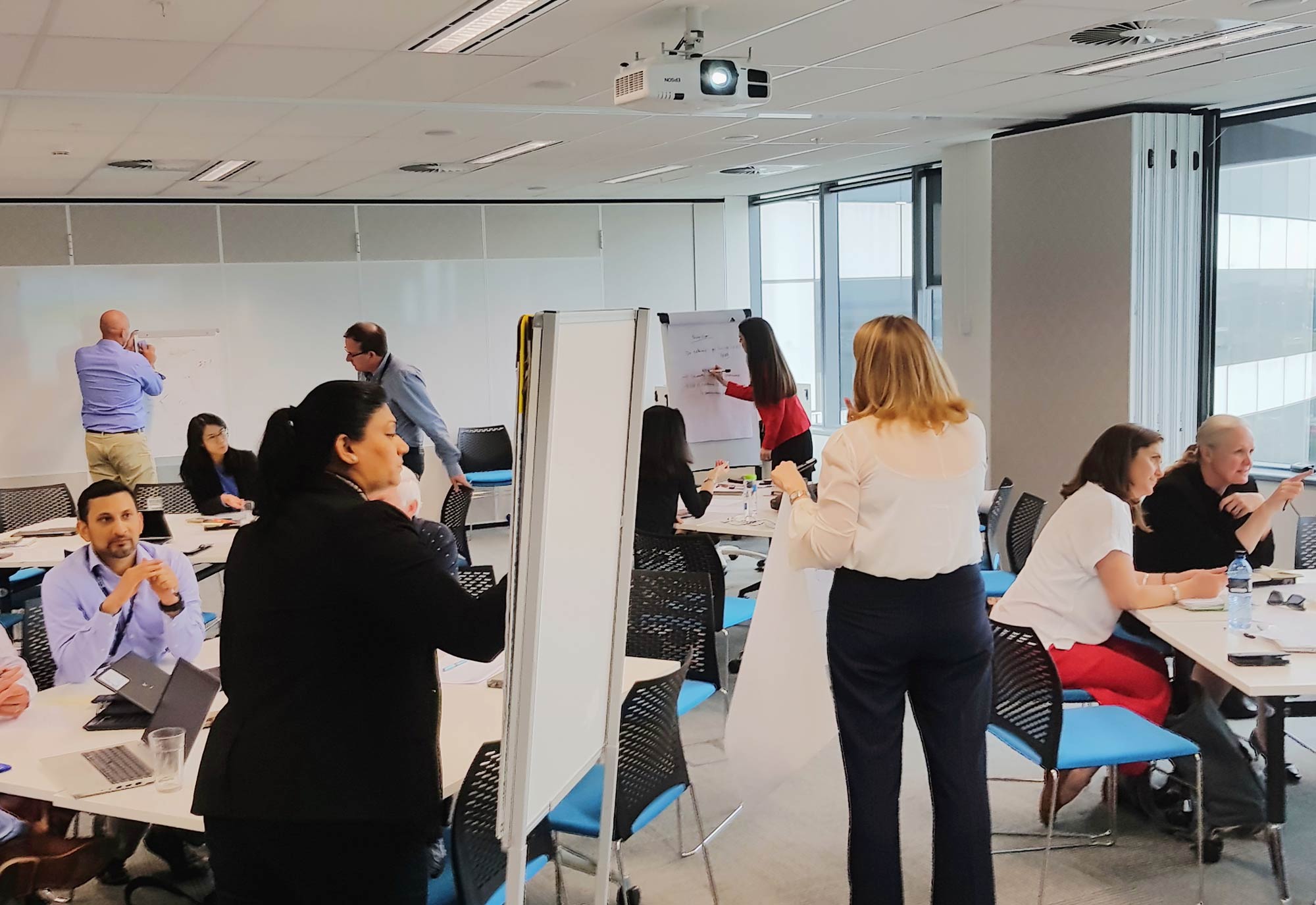
07 Dec Why You Need to Rethink Your Organisational Structure
Know more of our DIGITAL & ICT STRATEGY capabilities.
As organisations gain complexity, so too must their structures. The traditional linear structure – where authority flows from the top down and tasks are completed sequentially – is no longer fit for purpose in a world that is ever-changing and interconnected.
With so much information and so many different ways of communicating, this type of structure can lead to stagnation and inefficiency. This can often lead to a siloed approach where information is not shared across departments, leading to inefficiencies and duplication of effort.
In order to stay agile and adaptable, organisations need to rethink their structures. This means integrating broader organisational design, operating model design, and governance definitions so that decision-making is more effective, processes are more efficient, and people are better engaged.
With technology being so widespread in businesses today, the need to have a more horizontal structure is now more important than ever before. When businesses prioritise digitisation, it enables them to be more adaptable to change and provides employees with greater autonomy and responsibility.
So, if you are looking to future-proof your organisation, it is time to rethink your structure. By doing so, you will be able to better meet the needs of a changing world and take advantage of the opportunities that technology presents.
When should you be rethinking your organisational design?

Organisational design should not be a static exercise. As the business landscape changes, so too should the way that businesses are organised. This means that organisations need to be constantly reassessing their structures in order to ensure that they are fit for purpose.
Decision-making involves a large scope of organisational touchpoints, so a review of structure can help to focus and realign authority relationships, process improvements and people and talent development. A well-designed organisation will have the flexibility to change course quickly, respond to new opportunities or threats, and make decisions that are aligned with the company’s strategy. This means extending decision-making outside the traditional ICT area to business processes and business functions.
There are a number of different factors that can trigger a need for organisational design, such as:
Changes in strategy
With the ever-changing business landscape, it’s important for organisations to review their strategy on a regular basis. As your company’s strategy evolves, so too should your organisational design. A change in strategy could be due to a number of different factors, such as a change in the market, new technologies or a shift in customer needs.
Changes in the business environment
The business environment is also constantly changing and this can trigger a need for organisational design. For example, globalisation has led to many organisations operating in multiple countries. This means that they need to have a structure that is designed to support this type of operation.
Changes in technology
Technology is constantly evolving and this can have a big impact on the way that organisations are structured. For example, the introduction of artificial intelligence (AI) is likely to change the way that many organisations operate. As AI begins to take on more tasks, there will be a need for organisations to rethink their structure to ensure that they are making the most of this technology.
Changes in the workforce
The workforce is also changing, with an increase in the number of millennials and Gen Z employees. These employees have different expectations and needs than previous generations, so organisations need to be aware of this when designing their structure.
If any of these factors are present, it is likely that the current organisational structure will no longer be effective and will need to be revised.
How to transform your organisational structure

When your organisation is ready for a change, there are a few things you can implement and keep in mind to help make the transformation process as smooth as possible.
ICT operating style
So you can move away from the traditional top-down, hierarchical structure, it is important to have a more flat, networked organisation where decisions are made closer to the point of customer interaction. Companies can achieve this in multiple ways, including operating in a more agile way and using collaborative technologies such as social media and cloud-based applications.
Business process redesign
It is also important to review and redesign business processes to ensure that they are fit for purpose and aligned with the company’s strategy. By involving streamlining processes, automating tasks or introducing new technologies, companies can improve efficiency.
New roles and responsibilities
As the organisation changes, so too will the roles and responsibilities of employees. It is important to review these regularly and make sure that everyone understands their new role within the organisation. This could involve training and development programmes to help employees adjust to their new way of working.
Program governance
To implement organisational change successfully, it is important to have a programme governance structure in place. With this, the transformation process is managed effectively and everyone involved can be confident in their role and responsibilities.
Changing your organisational design can mean peak performance
Organisational design is a complex process, but it’s one that is essential for ensuring that businesses are able to operate effectively. By understanding the different factors that can trigger a need for organisational design and the different tools that can be used to improve it, businesses can ensure that they are always operating at their best.
Information Professionals Group can help your organisation review and develop operating models and governance design to ensure your organisation is managed effectively. With our experience in developing organisational designs, structures, roles and responsibility definitions, and RACI (Responsibility, Accountability, Consult and Inform) charts to support our client work, we can help your organisation to create value, grow, and have the capabilities needed to be future-proof.
- Tech Your Business Podcast - 26 February 2024
- Security Market Watch Podcast - 26 February 2024
- The Business Octopus Podcast - 15 February 2024












